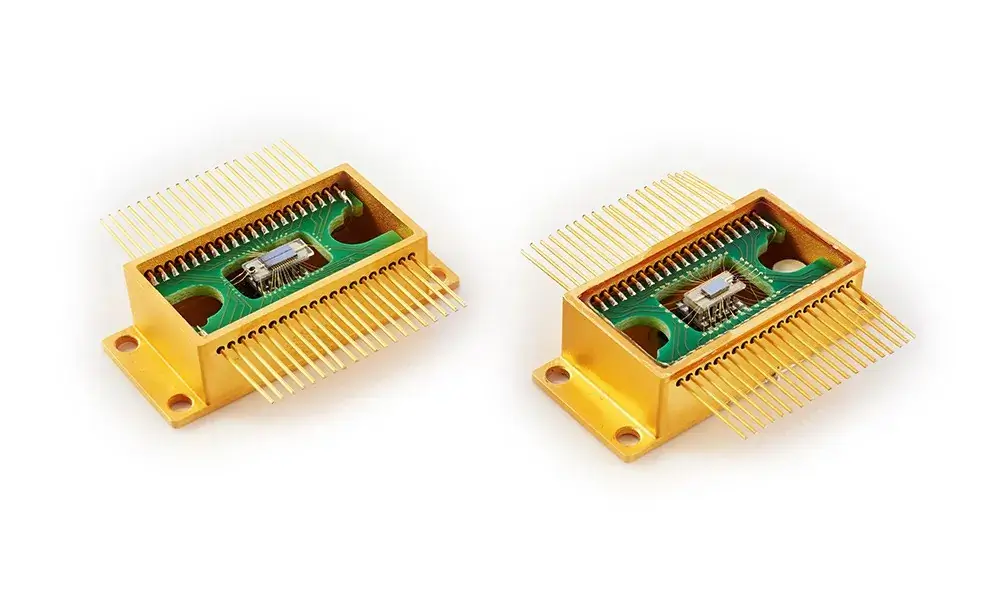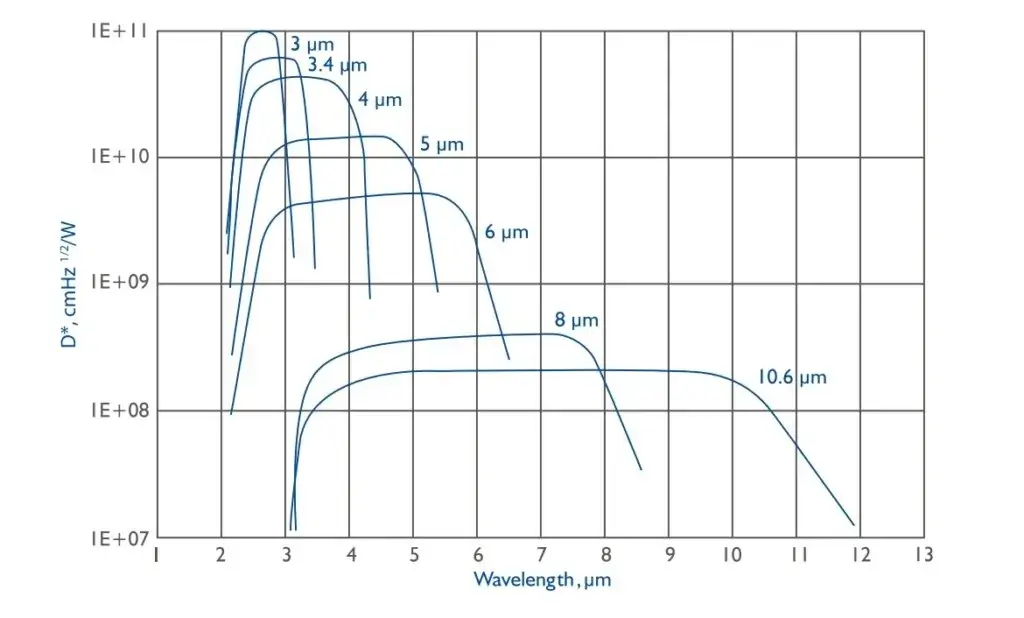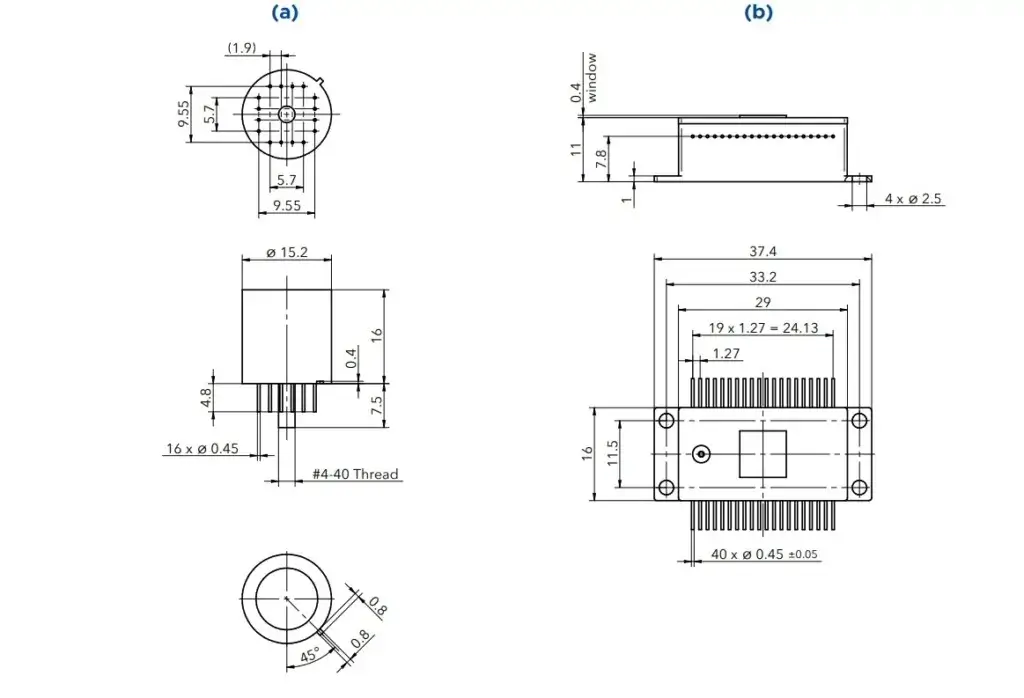Multielements Devices
VIGO Photonics’s 32-element array is now available, with dedicated preamplifier. The detectors line is a set of individual active elements and the signal of each of them is output independently. A multielement detector, unlike a single-element detector, allows to record radiation of different wavelengths at the same time.


Exemplary spectral detectivity
Table 1. Detectivity and time constans of HGCDTE detectors
| Optimum wavelength λopt, µm | 3.0 | 3.4 | 4.0 | 5.0 | 6.0 | 8.0 | 10.6 |
| Detectivity D* (λopt), cm·Hz1/2/W | ≥7.0×1010 | ≥4.0×1010 | ≥3.0×1010 | ≥9.0×109 | ≥2.0×109 | ≥2.0×108 | ≥1.0×108 |
| Time constant τ, ns | ≤280 | ≤200 | ≤100 | ≤80 | ≤50 | ≤45 | ≤10 |
Our technological capabilities also allow the production of multielement detectors with InAsSb (indium arsenide antimonide) using the MBE (Molecular Beam Epitaxy) method.
These devices are complying with the RoHS Directive. They are designed for applications where higher resistance to difficult operating conditions should be ensured.
The great advantage of VIGO Photonics multielement detectors is that there is no need for cryogenic cooling. This results in a reduction in the size and weight of the device, and hence a reduction in power consumption.
Figure 1 shows the dimensions (unit: mm) of TO8 16pin (a) and flatpack 40pin (b) housings in which VIGO Photonics multielement detectors are mounted.
Figure 1. Mechanical layout

Key features of the product
Advantages:
- High sensitivity
- High-speed response
- Convenient cryogenic-free operation
The key advantages of VIGO Photonics multielement detectors are very high accuracy and measurement speed. In temperature measurements, accuracy of a single millikelvin is achieved, even when measuring an object present in the field of view for only a few microseconds.
In spectrophotometry, these advantages allow obtaining high-quality measurements in a short time. Measuring the entire spectral range at the same time shortens the measurement time (compared to the time needed for scanning and full spectrum analysis in one-piece detectors).
Table 2 presents the parameters of VIGO Photonics multielement detectors, selected for the needs of individual applications.
Table 2. Parameters
| Parameter | Value |
| Array format | linear or bilinear, up to 32 elements |
| Active elements material | HgCdTe or InAsSb |
| Detector type | PV (phtovoltaic) or PC (photoconductor) |
| Operating wavelength | MWIR (λcut-off: 3.0 to 8.0 µm) LWIR (λcut-off: 8.0 to 14.0 µm) λcut-on can be optimized upon request |
| Pixel size | minimum 25×25 μm |
| Cooling | 2- or 3-stage TEC |
| Active elements temperature | 210 – 270 K |
| Temperature sensor | thermistor or diode (accuracy up to ±1 K) |
| Time constant | 1 – 500 ns |
| Package | TO8 16pin or flatpack 40pin |
| Window | Si/Al2O3/Ge with or without anti-reflection coating, planar or wedged |
| Ambient temperature | 0 to 70°C |
| Storage temperature | -20 to 50°C |
VIGO Photonics multielement detectors are offered with a wide range of accessories. Accessories can be tailored to the needs of application and integration with the user’s system.
Table 3 shows the examples of solutions.
| Accessory | Description |
| TEC controller | onboard analog controller |
| Lens mount | C-mount 1” or SM1 THORLABS |
| Preamplifier | ultra-low noise, selectable bandwidth |
| DAQ | SPI or USB HS |
Access to file
Access to this file is limited. In order to download it, please provide all the information and submit the form.
Application notes
![]()









